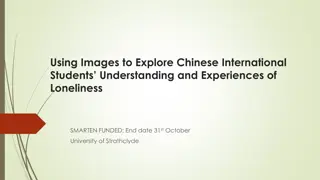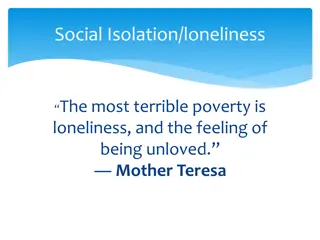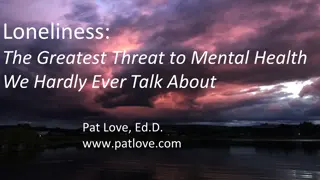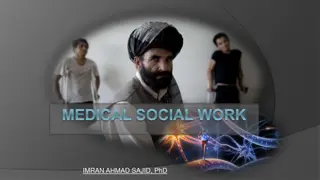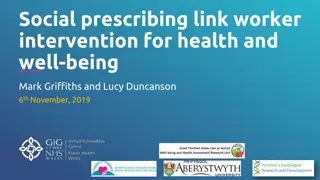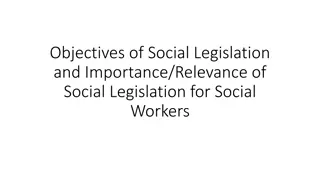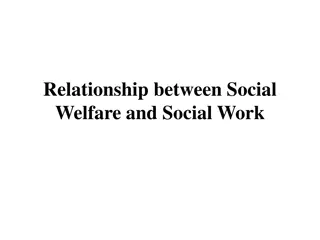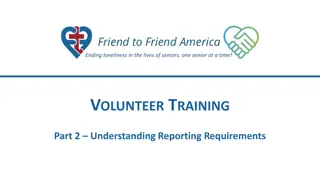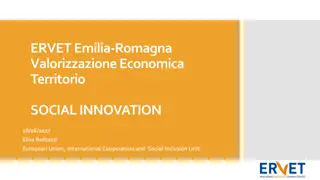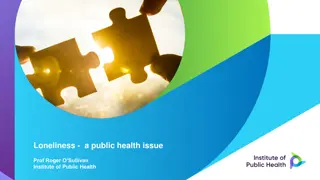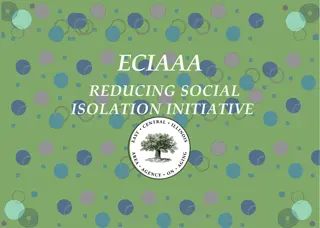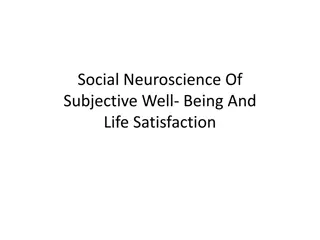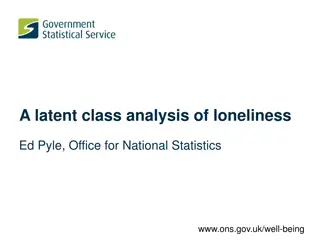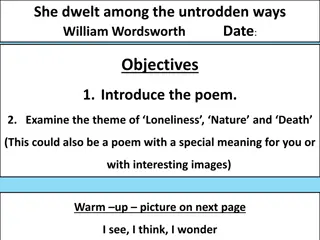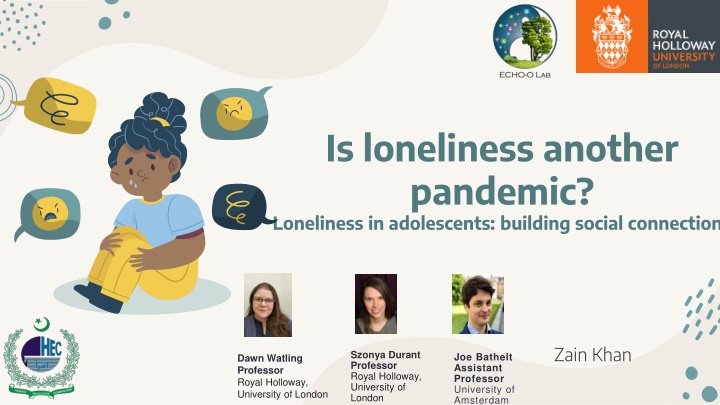
Loneliness in Adolescents: Understanding the Pandemic of Isolation
Explore the prevalence of loneliness in adolescents worldwide, the differences between feeling alone and being alone, and the potential chronic outcomes of loneliness, including mental health issues and physical health problems. Discover why studying loneliness is essential and the implications of chronic loneliness as a risk factor for maladjustment.
Download Presentation

Please find below an Image/Link to download the presentation.
The content on the website is provided AS IS for your information and personal use only. It may not be sold, licensed, or shared on other websites without obtaining consent from the author. If you encounter any issues during the download, it is possible that the publisher has removed the file from their server.
You are allowed to download the files provided on this website for personal or commercial use, subject to the condition that they are used lawfully. All files are the property of their respective owners.
The content on the website is provided AS IS for your information and personal use only. It may not be sold, licensed, or shared on other websites without obtaining consent from the author.
E N D
Presentation Transcript
Is loneliness another pandemic? Loneliness in adolescents: building social connections Zain Khan Szonya Durant Professor Royal Holloway, University of London Joe Bathelt Assistant Professor University of Amsterdam Dawn Watling Professor Royal Holloway, University of London
Introduction We all feel lonely from time to time, here are some examples of such situations: When we don't have someone to sit down for lunch with When we move to a new city When our friends do not have time for us on the weekend When you get a good news and you have no one to share it with Over the past few years this occasional feeling has become a constant! The most connected generation in history is also the loneliest.
Prevalence rate 9.2% 14.4% Lonelines s 40% Prevalence rates of loneliness (12 to 17 years) varied between 9.2% and 14.4% across 76 countries (Surkalim et al., 2022). 40% adolescents reported feeling lonely often or very often (Qualter et al., 2013)
Feeling alone vs being alone Loneliness is an emotional state, when you feel alone or disconnected from others. You can be home alone, but you don't experience loneliness. It s a physical state.
Chronic loneliness outcomes Suicidal Thoughts (Schinka et al., 2013) Depression (Qualter et al., 2010; Ladd & Ettekal 2013; Qualter et al., 2013). Anxiety (Vanhalst et al., 2013) Physical Health Problems Mortality Rate Increased by 26% (Holt- Lunstad et al., 2015) (Caspi et al., 2006)
Implications of Chronic loneliness A self-reinforcing and highly detrimental risk factor for maladjustment (e.g., Qualter et al., 2015). 01 Heightened vigilance in the face of social threat Leading them to view the social world as a more threatening place (Cacioppo & Hawkley 2009). Experience more negative affects When encounter negative social interactions (van Roekel et al., 2013). 02 03
Exploring Exploringunderlying mechanisms that can lead to or maintain chronic loneliness Emotion Regulation Individuals who experience persistent loneliness often struggle with effectively managing their emotions related to social interactions and feelings of isolation (Qualter et al., 2015). A likely mechanism that has been implicated in loneliness and other mental health disorders (Lincoln, Schulze, & Renneberg, 2022, Preece et al., 2021).
Propose strategies to enhance social connectedness Current research focuses on: (a) Changing how people think (b) Social skills and psychoeducation (c) Socially focused supporters (d) Creative Expression Mann F, Bone JK, Lloyd-Evans B, Frerichs J, Pinfold V, Ma R, Wang J, Johnson S. A life less lonely: the state of the art in interventions to reduce loneliness in people with mental health problems. Soc Psychiatry Psychiatr Epidemiol. 2017 Jun;52(6):627-638. doi: 10.1007/s00127-017-1392-y. Epub 2017 May 20. PMID: 28528389; PMCID: PMC5487590. https://www.artandhealing.org/
Interested to be involved Interested to be involved in research? in research? 1. Social connectedness and mental health (zain.khan.2022@live.rhul.ac.uk) 2. RISE project (Reactions and Interacting on Social mEdia) (gemma.rides@rhul.ac.uk)
Thank you! Do you have any questions zain.khan.2022@live.rhul.ac.uk @zainkh_psy


